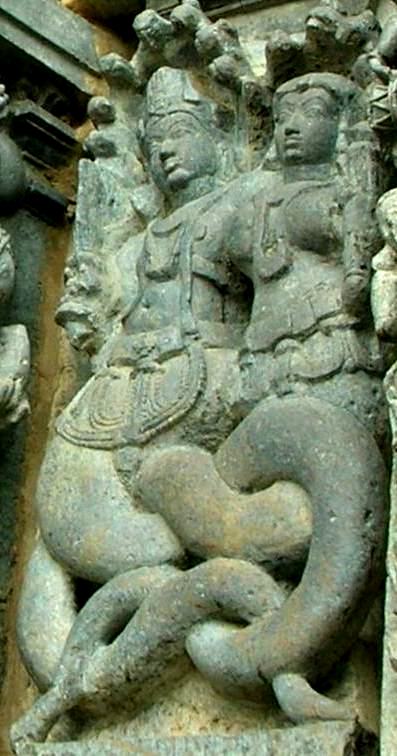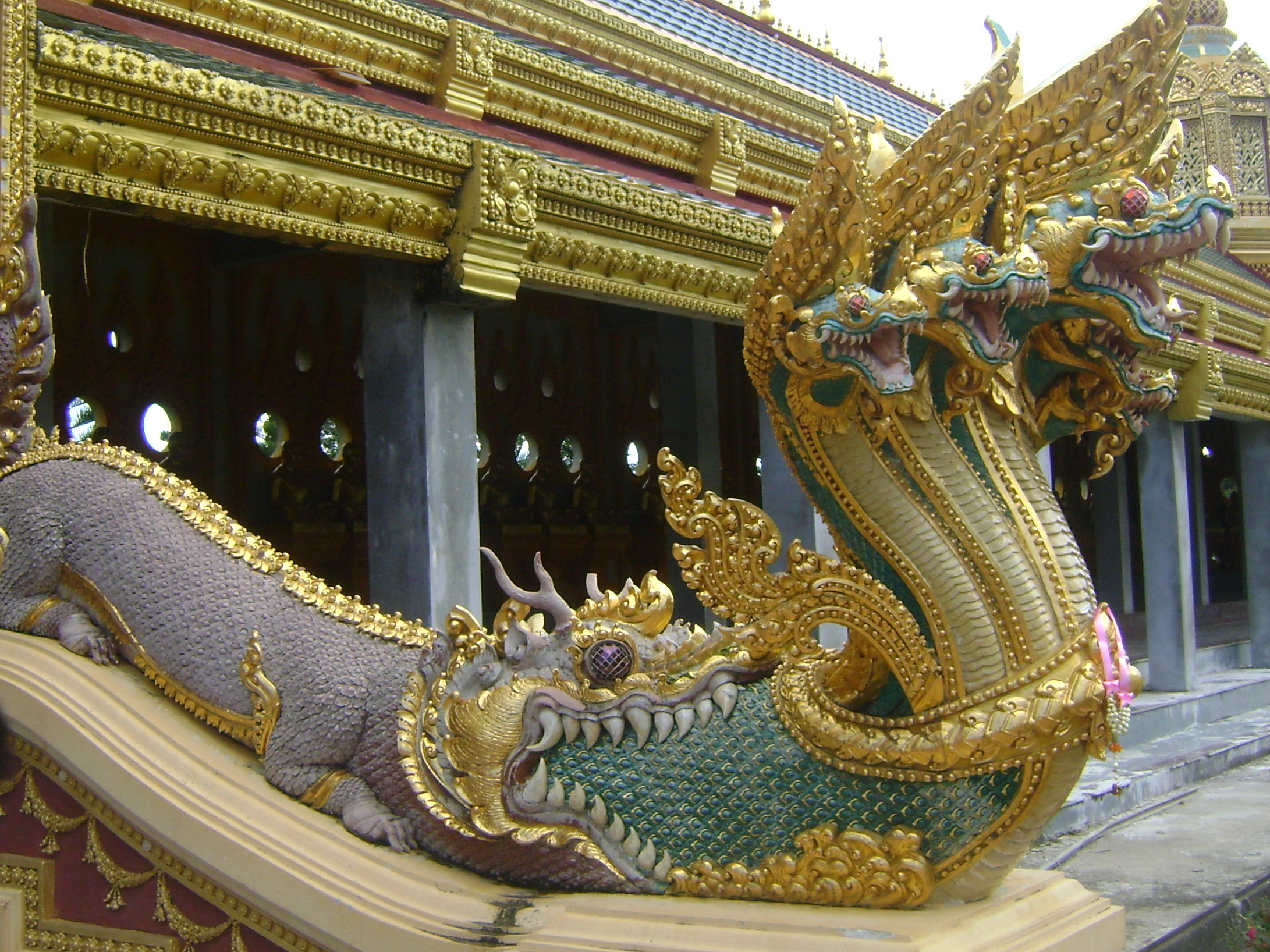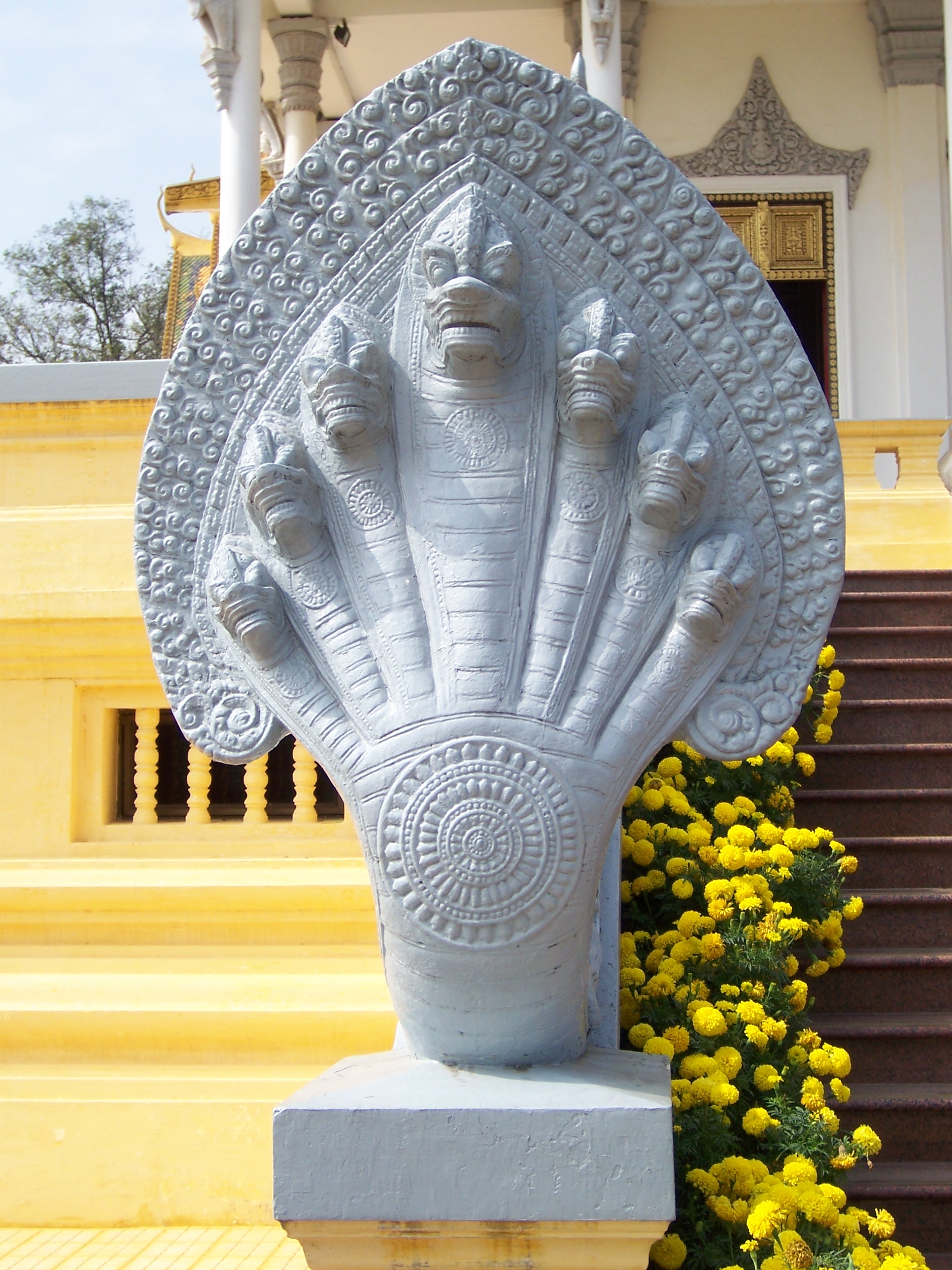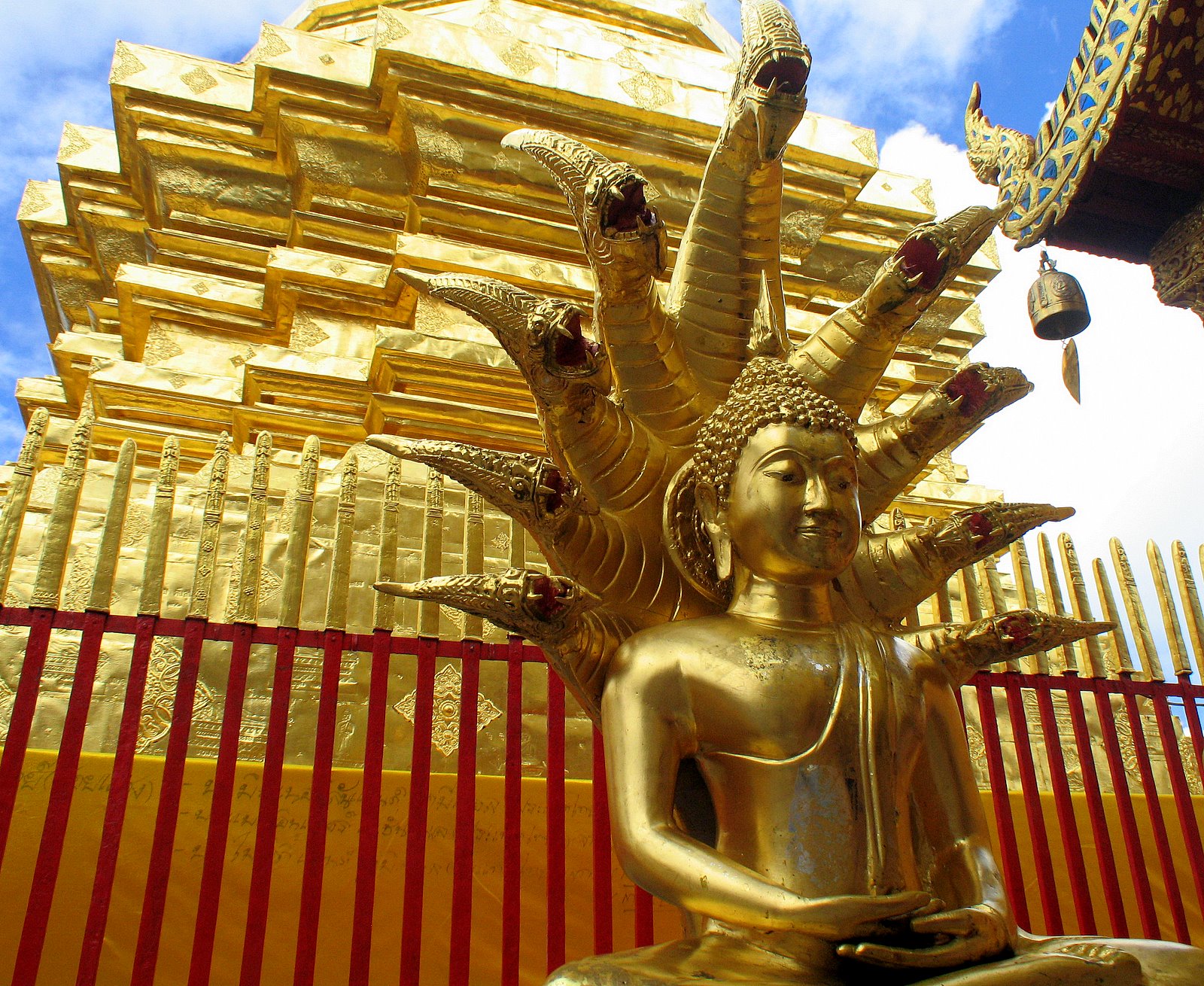Naga Goddess

Nāga (IAST: nāgá, Burmese pronunciation: [nəɡá]) is the Sanskrit and Pāli word for a deity or class of entity or being, taking the form of a very great snake—specifically the king cobra, found in Hinduism, Buddhism, Jainism and Sikhism. A female Nāga is a nāgī or nāgiṇī.[1]
Etymology
In Sanskrit, a nāgá (नाग) is a cobra, the Indian cobra (Naja naja). A synonym for nāgá is phaṇin (फणिन्). There are several words for "snake" in general, and one of the very commonly used ones is sarpá (सर्प). Sometimes the word nāgá is also used generically to mean "snake".[2][2] The word is cognate with English 'snake', Germanic: *snēk-a-, Proto-IE: *(s)nēg-o-.[3]
snake (n.)
Old English snaca, from Proto-Germanic *snakon (cognates: Old Norse snakr “snake,” Swedish snok, German Schnake “ring snake”), from PIE root *sneg- “to crawl, creeping thing” (cognates: Old Irish snaighim “to creep,” Lithuanian snake “snail,” Old High German snahhan “to creep”). In Modern English, gradually replacing serpent in popular use.
Traditionally applied to the British serpent, as distinguished from the poisonous adder. Meaning “treacherous person” first recorded 1580s (compare Old Church Slavonic gadu “reptile,” gadinu “foul, hateful”). Applied from 17c. to various snake-like devices and appliances. Snakes! as an exclamation is from 1839.
Snake eyes in crap-shooting sense is from 1919. Snake-bitten “unlucky” is sports slang from 1957, from a literal sense, perhaps suggesting one doomed by being poisoned. The game of Snakes and Ladders is attested from 1907. Snake charmer is from 1813. Snake pit is from 1883, as a supposed primitive test of truth or courage; figurative sense is from 1941. Phrase snake in the grass is from Virgil's Latet anguis in herba [Ecl. III:93].
[etymology of snake https://www.etymonline.com/word/snake]
那伽(梵语:नाग,IAST:Nāga)是一个梵语和巴利语中的词汇,用来指代一种传说中的神秘生物。这种生物的外表类似巨大的蛇,有一个头或多个头;其形象在婆罗门教、印度教和佛教经典中常有出现。但是这个词的用法并不十分严格,它有时也被用来指代大象 [1] 或真正的蛇,尤其是眼镜王蛇和印度眼镜蛇(眼镜蛇在印地语中的读音就是“纳格”)。另外,雌性的那伽被叫做“那吉”。在佛教引進中國時,那伽被等同於中國傳說中的龙,或天龍。



there seems to be a mix of legends of Hindu Naga with Greek Medusa. Not sure the connection was ancient.
 Medusa
Medusa